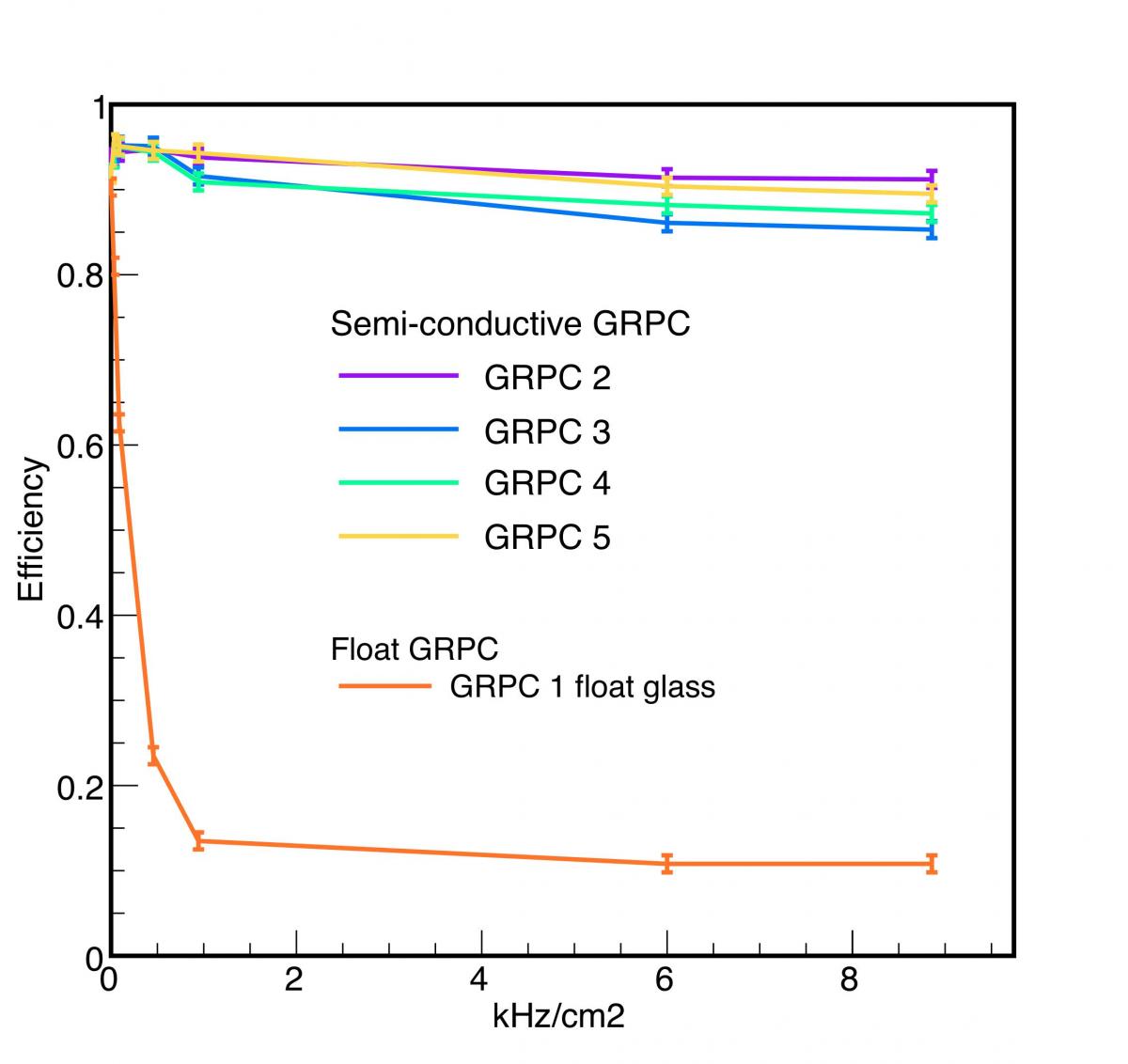CMS tests new Resistive Plate Chambers
With the increase of the LHC luminosity foreseen in the coming years many detectors currently used in the different LHC experiments will be dramatically impacted and some will have to be replaced. The new ones should be capable not only to support the high particle rate but also to provide time information to reduce the data ambiguity that will arise due to the expected high pileup.
Resistive Plate Chambers (RPC), with their excellent efficiency and timing precision (< 1 ns), are used in LHC experiments as muon detectors,and the information they provide plays an important role in the trigger systems.
The standard RPC (both Bakelite and glass-based RPC) have a rather low detection rate capability (< few hundreds/cm2) and for this reason they are absent in the high eta region of the CMS muon system.
RPC with low-resistivity materials are proposed to equip the very forward region of the CMS detector. In their single-gap version, they can stand rates of few kHz/cm2. Their time precision of about 1ns can allow a reduction of the noise contribution and hence improve the trigger rate.
In their multi-gap version, the rate capability is increased and the time precision could reach a few ps.
An R&D project was submitted to the CMS collaboration to study the possibility of equipping the high eta region of CMS with either double-gap or multi-gap GRPC, using a low resistivity glass developed by the Chinese group of Tsinghua. The R&D was accepted as an official CMS R&D in 2012 with a duration of two years.

Figure 1: The efficiency of GRPC using low-resistivity at different particle rates. The efficiency of a float GRPC is also shown for comparison.
After a successful test at DESY showed the nice rate capabilities of the Low-Resistivity GRPC (Figure 1), few such chambers, of 30x30 cm2 each, were exposed for more than one year to the Gamma Irradiation Facility source. Their efficiency was monitored with cosmic rays in the presence of a high irradiation environment (few 107 γ/cm2). In August, the same detectors, in addition to new ones, were exposed to the T10 beam of PS. All the chambers were single-gap Glass Resistive Plate Chamber (GRPC) equipped with low-noise electronic readout (HARDROC ASIC) with pick-up pads, except for one with two-gap GRPC, for which a PCB equipped with pick-up strips of 2.5 mm pitch on its two faces was inserted between the two gaps. The latter is similar to the one proposed for the forward region of CMS. Rate, high voltage, and threshold scans were performed during the test in very good beam conditions. Preliminary results show that excellent efficiency, good precision, and reasonable time resolution could be achieved with such a detector.
